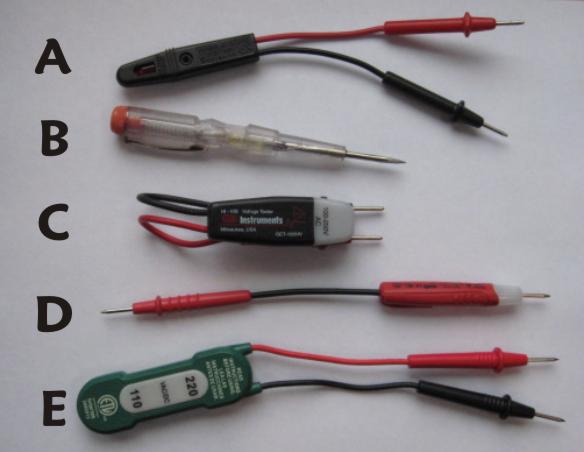Neon Circuit Testers
I haven't seen stores calling these "neon," just "voltage tester" or "voltage indicator." But a neon circuit tester does use a small neon bulb plus a resistor inside it, which make it simple for you to check whether something in your wiring system is basically energized or not -- and therefore whether it will probably work (and be unsafe to treat as if it were dead). Although you can insert its two prongs into the slots of a receptacle (say, with the idea of replacing it), that won't assure you as to whether you are safe to involve your body in the project. But when you hold one of the probes in the palm of your hand, then touching the other to various wires or parts in question will tell you about your safety, because this tester will light up slightly for significant voltage. Yes, a small trickle of current goes through you then, but you don't feel anything (unless you are outdoors with very wet feet or all sweaty and wrapped around a water pipe). See my YouTube Video. I have a lot to say in favor of the neon circuit tester -- in relation to when and why to use it and how it compares with outlet testers and other testers. But here are some common styles and my comments on them:

A- This is the cheapest and most common style of neon circuit tester. This one's red bulb is barely visible in the photo.
B- This screwdriver style neon electrical tester limits you to only comparing you (not another wire) to the wire or metal you touch its tip to. You are to be touching a metal piece on the handle's end with a thumb or the palm of your hand. Its light bulb is in the middle of the handle.
C- This one can hold its probes captive too, in case you sometimes want to have it test across the two slots of a receptacle.
D- This in-line style shows that the bulb doesn't have to be halfway between the probes. This one's bulb is in the white plastic of right-hand end.
E- This dual-voltage model lights up under the "110" or the "220." There are some designed to indicate four different voltages. Either way, these need to be more exact, and so they do not light up for your body the way the other testers here do. With these you can't learn anything by holding one probe in your palm, so don't. Because of this limitation or lack of versatility, I do not mean to include this kind under the name "neon tester" when I use that term in this website.